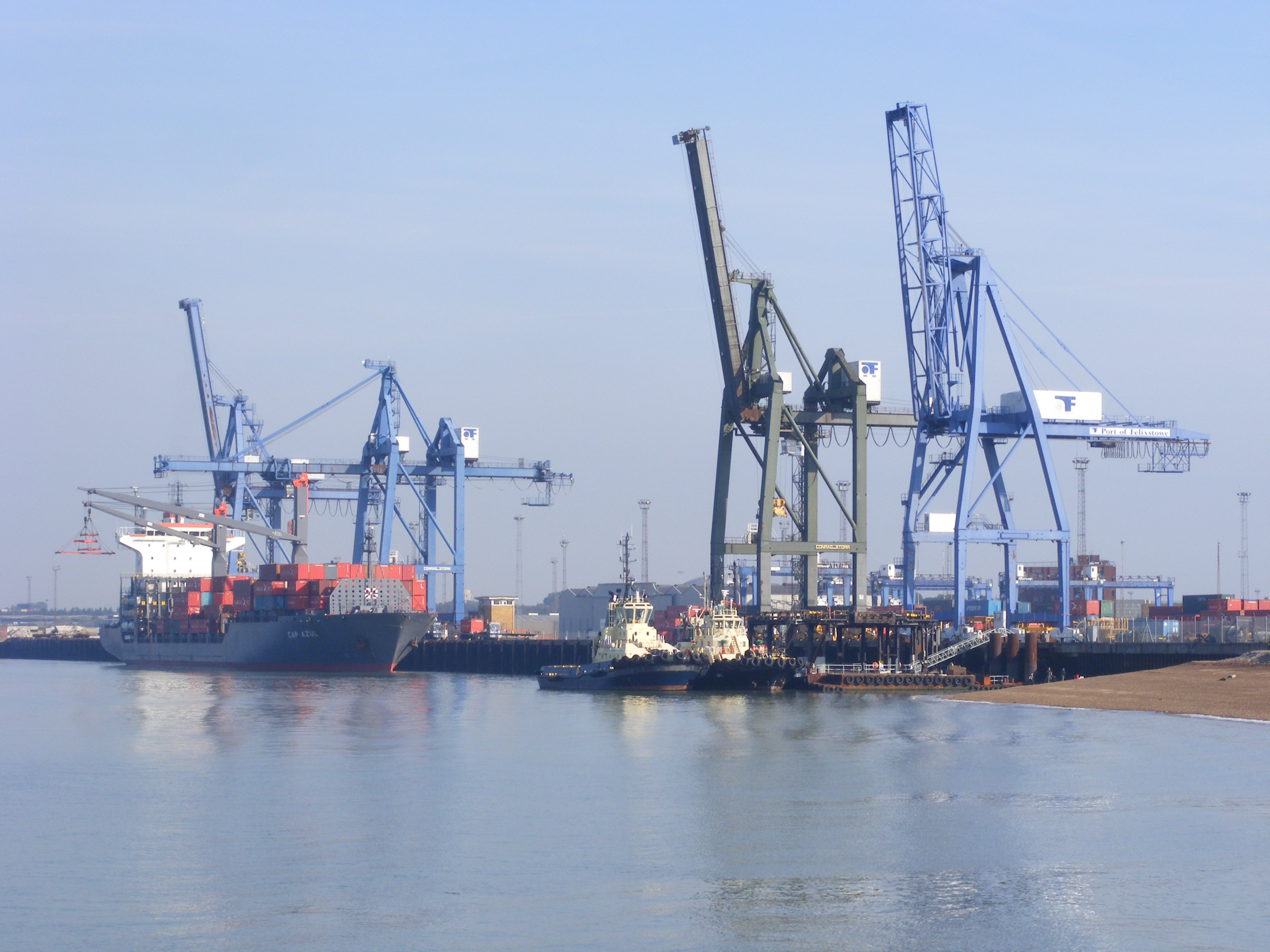
Image by Glen Denny, via Creative Commons License
In contrast to high speed rail lines and airports, seaports don’t often feature in the headlines. But Britain’s ports continue to be strategic links in the chain connecting local and global markets, accounting for:
- 95% of all cargo movements by tonnage into the UK;
- 400,000 jobs;
- £21 billion to the economy each year; and
- significant economic impacts on their hinterlands.
However, the port sector is particularly vulnerable to cyclical boom and bust movements. Container throughput in UK ports has fallen for three consecutive years, reflecting a downturn in global trade. To cut its costs, the industry has increased the scale of transport. Ten years ago, the largest container ships travelling from Asia to Europe held 8,000 to 10,000 containers. These days, as The Independent observed, a new generation of carriers are ruling the waves:
“These triple-E class ships stretch for a quarter of a mile and carry over 18,000 standard 20-foot containers, enough to hold a billion dollars of cargo; if you tried to unload them in one go, the line of trucks would stretch for 68 miles.”
In the UK, there are six berths currently capable of handling such large vessels: three in Felixstowe and two in Southampton. The sixth, and perhaps the most significant is at London Gateway.
Situated at Thurrock, Essex, on the north bank of the River Thames, this new ‘superport’ began operating in 2013. When it reaches full capacity several years from now, London Gateway will be able to handle 3.5 million containers a year. The facility also includes a 9 million sq ft logistics park – the largest in Europe. London Gateway’s owners – Dubai-based DP World – are banking on this ‘port-centric’ approach paying dividends when the economy picks up.
Currently, a large proportion of maritime containers are shipped inland from container ports such as Felixstowe and Southampton to distribution centres in the Midlands, then freighted back to their final destination. London Gateway believes its big selling point is that its own logistics facilities in the South East are closer to the bulk of the UK population, and will cut out unnecessary HGV mileage and CO2 emissions, while generating cost savings.
There are concerns, however, that London Gateway will draw traffic away from rival UK ports. In response to the challenge from London Gateway, the Suffolk port of Felixstowe, owned by a Hong Kong conglomerate, is planning to double its capacity to 8 million containers by 2030.
Britain’s regional ports are also looking to the future:
- Work has begun on a £300m project that will add half a million containers to the Port of Liverpool every year, taking its annual capacity to two million;
- The Bristol Port Company is currently building a £600m deep sea container terminal at Avonmouth Dock to handle large container vessels and next-generation ultra large container ships;
- Aberdeen Harbour is investigating expansion to a site in nearby Nigg Bay;
- In Hull, the Alexandra Dock will be transformed into a service hub for the giant wind farms being built in the North Sea.
Concerns about overcapacity remain, heightened by the loss of services from Thamesport on the River Medway to its rivals in Felixstowe and Southampton, and the decision by the SAECS consortium to switch its traffic from Tilbury to London Gateway.
It’s unlikely that any British port will match the throughput of the world’s busiest seaports (in 2013 Shanghai handled almost 34 million containers). However, the extensive and widespread expansion plans suggest that when the anticipated upturn happens, Britain’s ports will be ready.
Further reading
The Idox Information Service has a wealth of research reports, articles and case studies on transport and infrastructure. Items we’ve recently summarised for our database include:
How will the Atlantic Gateway support sustainable economic growth?
Governance, governance models and port performance: a systematic review
The impact of container type diversification on regional British port development strategies
Port to port (how renewables can revive Scotland’s ports)
State of the art (London Gateway deep-water port)
Ports and regional development: a spatial analysis on a panel of European regions
N.B. Abstracts and access to subscription journal articles are only available to members of the Idox Information Service.
Share
Related Posts
A recent item on BBC Radio 4’s Today programme generated an unusually high number of responses from listeners. A man who had lost his job in the financial services sector at the age of 57 described his difficulty in trying ....
With information now so accessible, it’s easy to assume that whenever you have a question you can simply tap it into a search engine. But, while the internet and digital search tools are undoubtedly useful for checking basic facts, when ....
Tackling geographical inequalities is critical for ensuring that all parts of the country have the potential to prosper. When the UK was a member of the European Union, it was entitled to a share of funding from the EU’s structural ....
By Ian Babelon A new-old concept for proximity “Are we there yet?” Parents may patiently nod to their children’s insistent nudges on a 20-minute journey to… somewhere. Quite rightly, researchers have asked: twenty minutes to what? The answer may well ....
